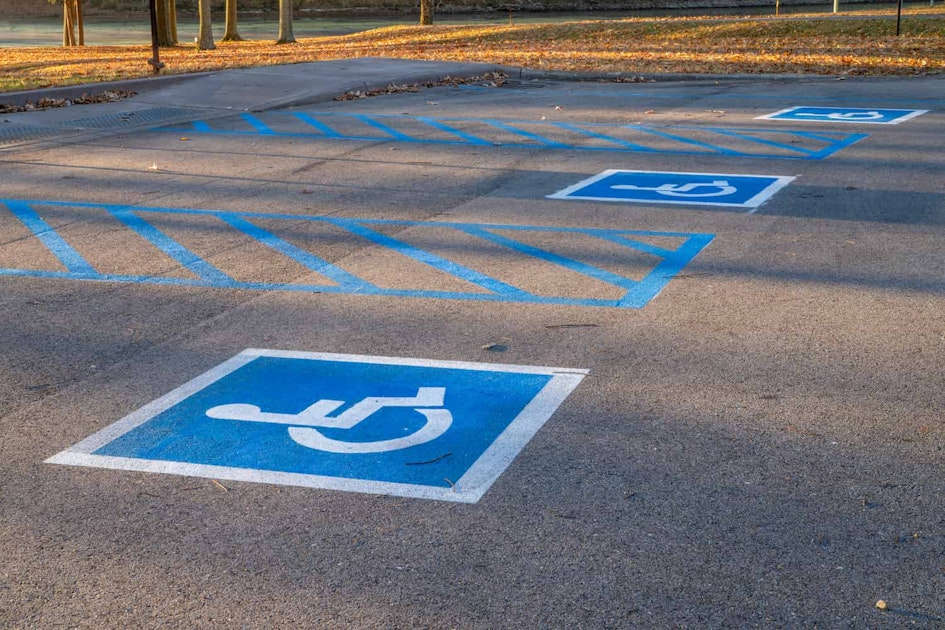If You’ve Noticed A Blue Line Painted On The Street, Here’s What It Mean
A painted blue line on the street can mean different things depending on where you are and how the line looks.
1) Utility locating / buried water pipes (most common for spray-painted lines)

What it means: Blue spray paint normally marks the route or centerline of potable (drinking) water mains or service lines beneath the pavement. Utility locators use a standardized color code so excavators and crews know what’s below before digging.
Why: Safety and damage prevention — hitting a water main is dangerous, expensive, and disruptive. The American Public Works Association / Common Ground Alliance color code is widely used in the U.S. so crews and contractors can quickly identify utility types.
How to recognize it: short spray-painted dashes, dots, or thin lines that often run along the curb or across a lane; sometimes accompanied by small flags or a locator company name. These marks are usually temporary and tied to construction or planned excavation.
2) Accessible/disabled parking or “blue curb” (permanent curb/street paint)

What it means: A blue curb or blue painted parking stall commonly indicates spaces reserved for people with disabilities (permit/placard required). Municipalities use blue to show those restrictions.
Why: Clear, visible designation of accessible parking to prevent misuse and ensure availability for people with disabilities. The color is reinforced by signage (wheelchair symbol) and enforcement rules. (
How to recognize it:
3) “Thin blue line” tributes to police (symbolic/controversial)

What it means: A single thin blue stripe painted on the roadway (often between double yellow lines or across a short stretch) is sometimes applied as a
Why: Communities or groups paint it to show support for police or to memorialize fallen officers. However, it’s symbolic rather than regulatory.
Important cautions: Federal/state traffic rules generally prohibit unauthorized changes to road markings because they can confuse drivers and create safety or liability issues. Agencies (USDOT / MUTCD) have said such decorative lines on public highways may be illegal or unsafe; some towns faced orders to remove them. Also, the “thin blue line” symbol has become politically controversial in some places.
How to recognize it: A single narrow blue stripe (not part of a utility marking or curb), often placed symbolically. It may be permanent paint or a temporary marking from local supporters. Check for nearby plaques, memorials, or news stories for context.
How to tell which meaning applies (quick checklist)
-
Is it short, dashed, or part of a cluster of different colored spray marks? → Likely utility locators (blue = potable water).
-
Is the curb or entire parking stall painted blue and signed with a wheelchair symbol? → Accessible parking.
-
Is it a single thin stripe painted along the centerline or between yellow lines with no utility flags?
→ Could be a thin blue line tribute (symbolic). Check local news or municipal notices.
What you should (and shouldn’t) do
-
Don’t dig where you see utility marks. If you’re digging, call your local “call before you dig” service (e.g., 811 in the U.S.). Hitting a marked line risks injury and big repair bills.
-
Don’t park in blue-curbed accessible spaces unless you have the proper placard. You can be ticketed or towed.
-
If you see a symbolic thin-blue-line painted on a public roadway and are concerned about safety or legality,
contact your local transportation/works department or police non-emergency number — unauthorized pavement markings may be removed for safety/legal reasons.
Short summary
-
Blue spray paint on pavement = potable water utility markings (temporary, for digging/works).
-
Blue curb or parking stall = reserved/accessible parking for disabled drivers.
-
Thin blue stripe across a road = symbolic “thin blue line” tribute to police (sometimes controversial and potentially illegal on highways).
Why Do We See “WC” and Toilet Icons Everywhere?

Many people are not familiar with the precise history of the toilet.
Who invented the modern toilet and when?
The inventor of the toilet was Sir John Harrington from England.
He developed the ‘water closet’ back in the 16th century and installed it for Queen Elizabeth I at her palace in Richmond.
A toilet, or water closet, is a toilet that uses water to flush bodily waste from the bowl.
The flow of water through the toilet pushes the contents into the drain. Incidentally, the word ‘toilet’ comes from the French word ‘toilette’, which originally referred to a room for dressing and applying make-up.

Toilet synonyms and their meaning
- WC: ‘WC’ stands for ‘water closet’.
- Loo: short for lavatory.
- Smallest room: a small space.
- Latrine: public toilet room in ancient Rome.
- Privy: private place
- 00: used in hotels to refer to the toilet, as this was a number not used for guest rooms.
The foundations for the successful company Villeroy & Boch were laid more than 275 years ago.
With the introduction of running water in the 19th century, the company revolutionised the world of sanitary facilities.
The first milestones included the introduction of hygiene standards and mass production of sanitary facilities.
Villeroy & Boch set standards in the separation of fresh and waste water and was a pioneer in the design of toilets with drainage systems.
If you’re wondering how a toilet drainage mechanism works, you can find the answer at Villeroy & Boch.

Toilet trends: from functionality to a well-being haven
In 1975, the designer Luigi Colani fundamentally changed the way we look at the bathroom.
He developed an innovative product concept for Villeroy & Boch that focused less on functionality and more on design and atmosphere.
This transformed the functional wet room into a place of relaxation, well-being and tranquillity.
The collaboration between Villeroy & Boch and Luigi Colani elevated the status of the bathroom to that of the living room or bedroom.





